| Informational Websites | ChronoMaddox -- the legacy of Chuck Maddox | OnTheDash -- vintage Heuer website | Zowie -- Omega information |
| Discussion Forums | ChronoMaddox Forum | Heuer Forum | Omega Forum |
| Counterfeit Watchers | ChronoTools Forum | ChronoTrader Forum |
|
|
The largest independent, non-commercial, consumer-oriented resource on the Internet for owners, collectors and enthusiasts of fine wristwatches. Online since 1998. | |||||||
|
||||||||
|
||||||||
 |
Vintage Heuer Discussion Forum
The place for discussing 1930-1985 Heuer wristwatches, chronographs and dash-mounted timepieces. Online since May 2003. | ||||||
| |||||||
| |||||||
I am sure you have all been anxiously awaiting the response so here it is.
Firstly, sample A is a very early example serial number 1311xx and sample B is later with serial 1957xx. I have found 10 visible differences between these two watches (case and dial only). I have been advised that there is at least one that is not visible unless you remove the backcase. This is from a reliable source and refers to the gasket, which is different for the two watches. If anyone has any pictures to share that would be a bonus.
No. 1 – Bezel
As you can see from the picture below, sample A has a larger diameter bezel ring than sample B which implies that the ID (internal diameter) of the bezel is greater for A than it is for B.

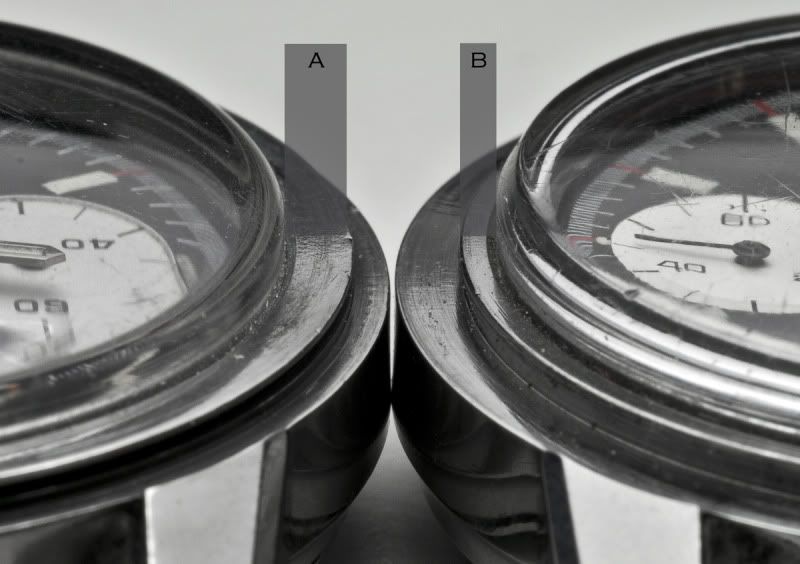
Note: I have ignored the differences in the crystals
In previous discussions it was mentioned that the bezel with the fine teeth fit sample A. However, I have noted on a selection of 2446C bezels (not all GMT) that this is not the case. In the next image you will note bezel A with larger ID and small teeth will fit watch A however the bezels B1 and B2 both have smaller ID i.e. for sample watch B but bezel B2 has smaller teeth. Conclusion: not all small teeth bezels fit the early case (sample A)

No. 2 – Pushers
We can clearly see the difference in the pushers (smooth versus fluted) but it is also interesting to note how the case has been machined to accommodate the pushers.
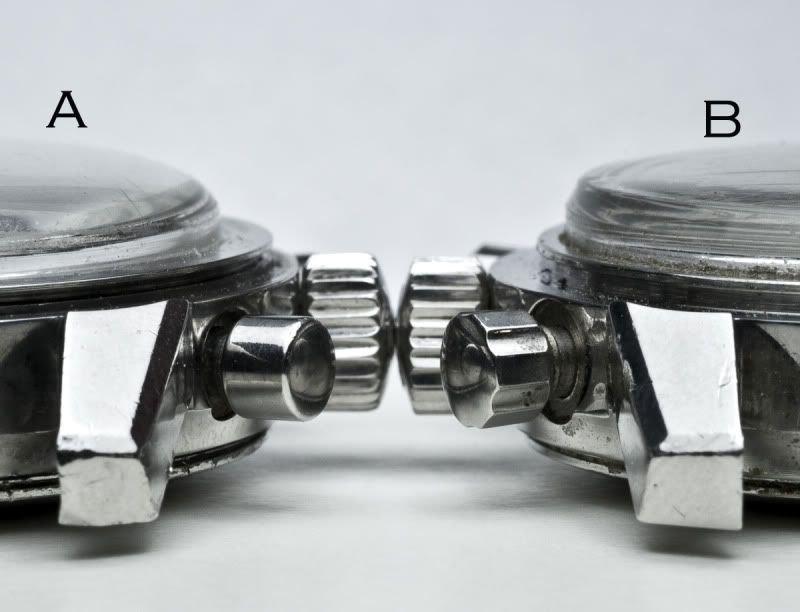
No. 3 - Case Back
The early execution A has an engraved case back and the later example has a completely plain back with no engraving. The circles engraved at the outer edge appear on both but are not the same as you can see.
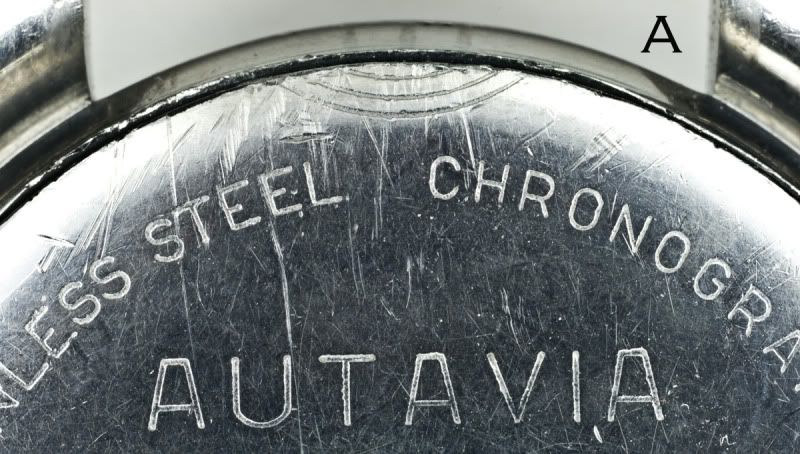
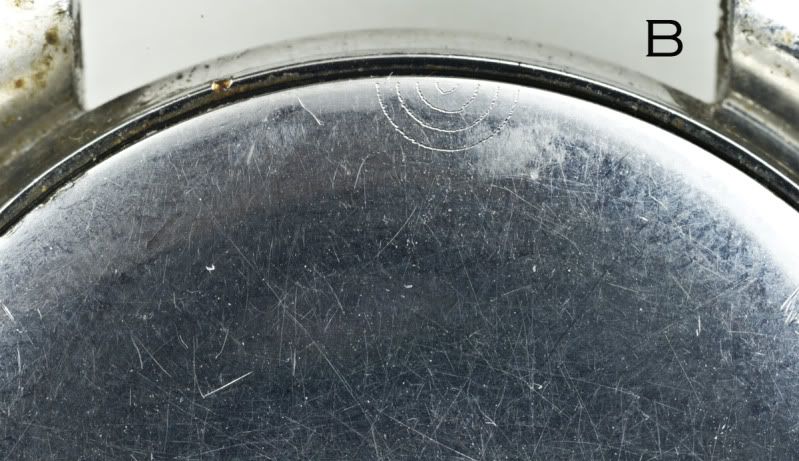
No. 4 – Heuer, Autavia and GMT print
The early execution A has a finer print and less serif than the later dial.
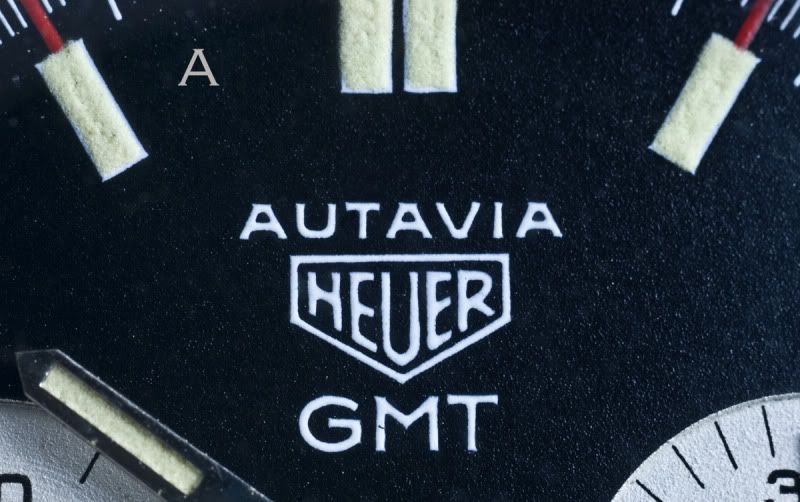
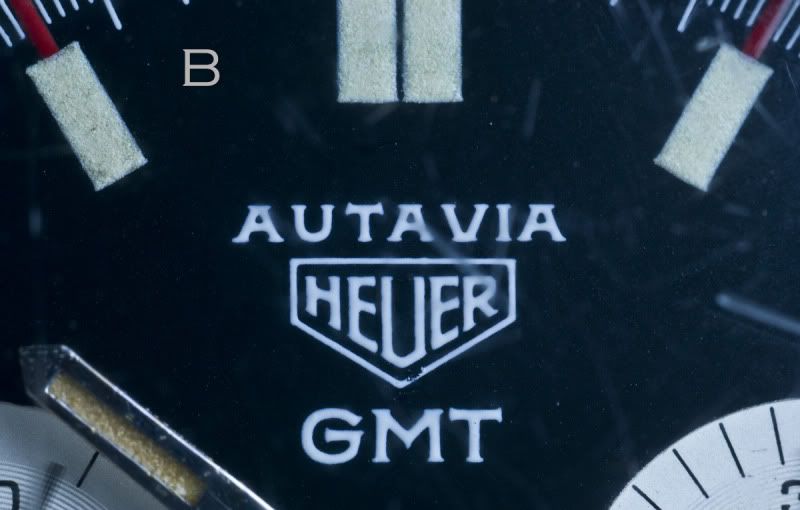
No. 5 – Finish on the dial
Also visible in the picture above is the mat finish on A and smooth finish on B
No. 6 – Size of Sub Registers
Early version A has smaller sub registers than B
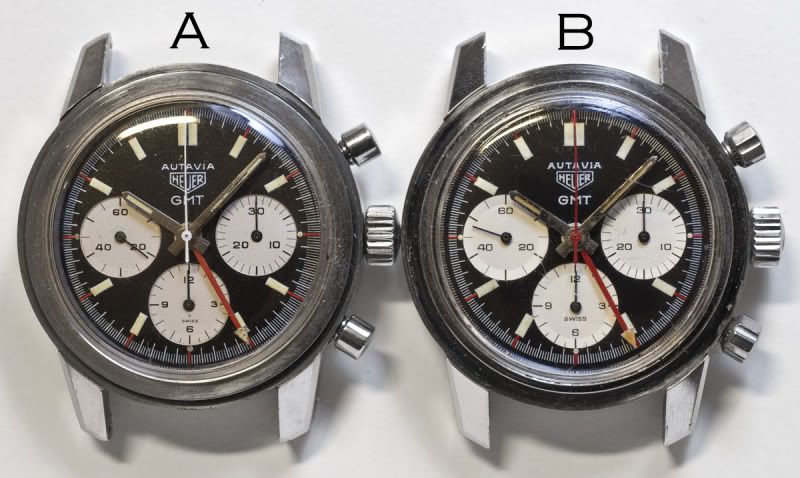
No. 7 – Construction of sub registers
The early execution A has sunken registers which are almost flat. The circular ridges are less defined and the print is slightly heavier. On the later dial B, there is a smooth, sloping bevel to the inner circular ridges and the printing is finer.
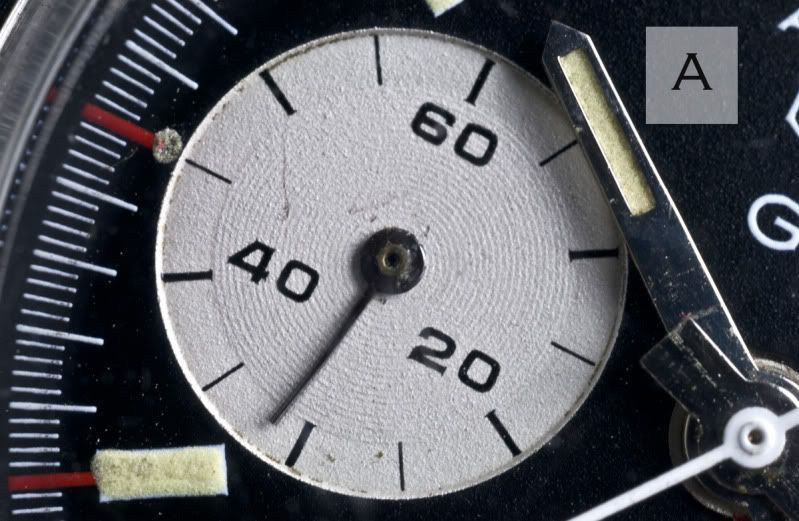
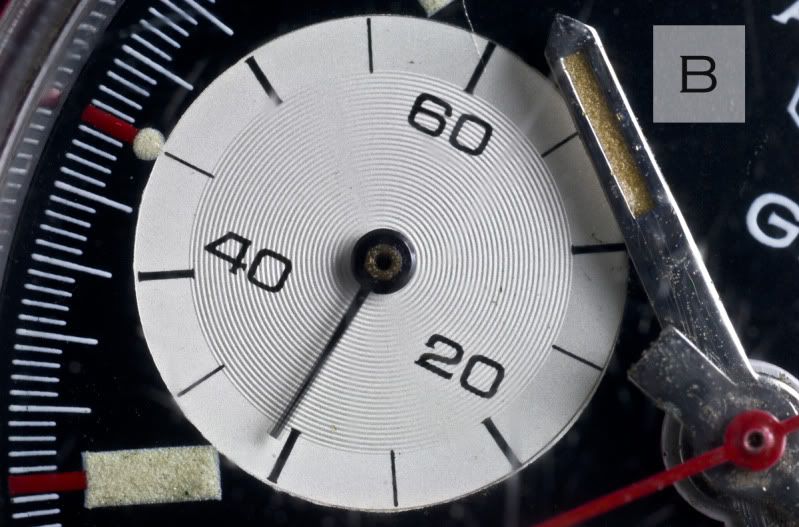
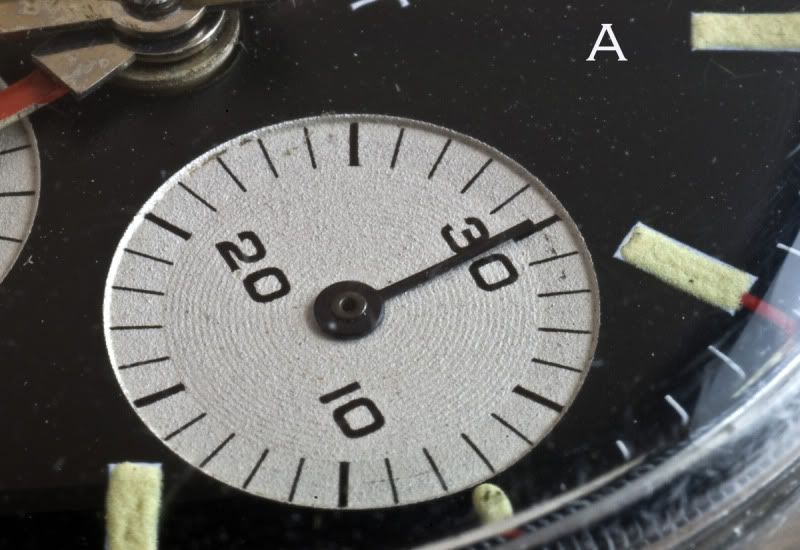
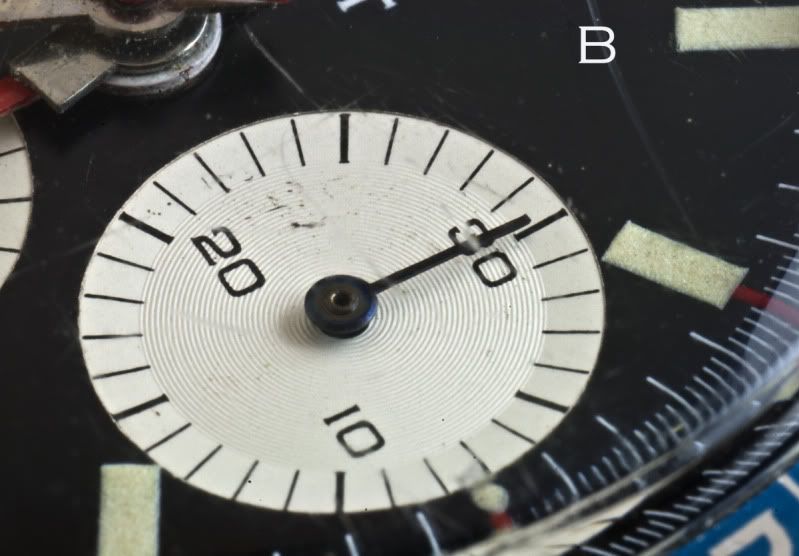
No. 8 & 9 – Red stripe and luminescent hour markers
Also visible in the first set of pictures above and the set below is a very slight difference in the dimension of the rectangular luminous hour marker and the length and width of the red stripes. Maybe a bit pedantic but the Rolex guys will be impressed.
No. 10 – “T” and no “T” on the hour register
Early execution A has the small T on the hour register above a small “Swiss” and the majority of the later excutions like our example B have no T on the dial and a larger “Swiss”. Could this be referring to the luminous material on the hands?
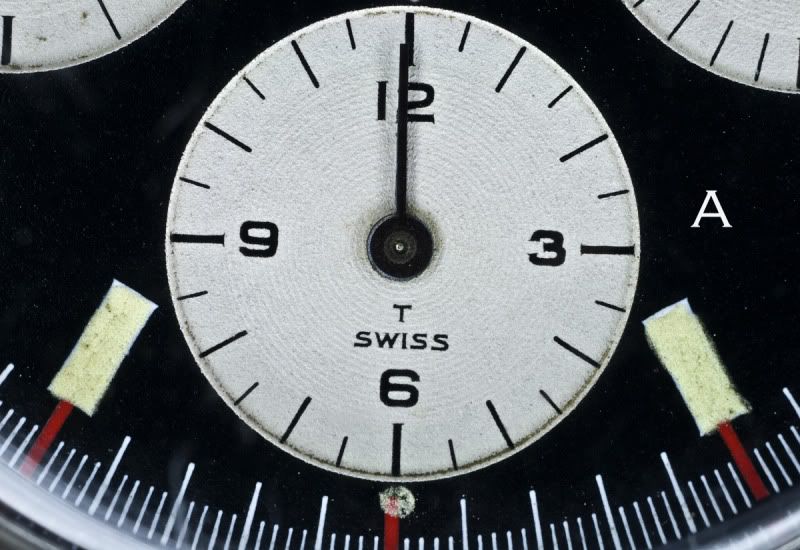
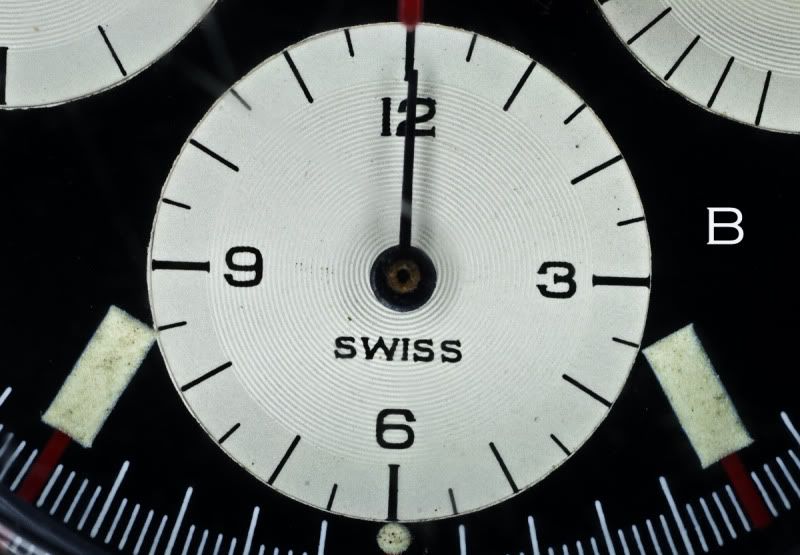
Thats it. I hope you found that interesting. I sure learned something buy really looking at the details of which there are many contained in each of these amazing pieces.
regards
Paul
www.heuerworld.com
| Chronocentric and zOwie site design and contents (c) Copyright 1998-2005, Derek Ziglar; Copyright 2005-2008, Jeffrey M. Stein. All rights reserved. Use of this web site constitutes acceptance of the terms of use. | CONTACT | TERMS OF USE | TRANSLATE |